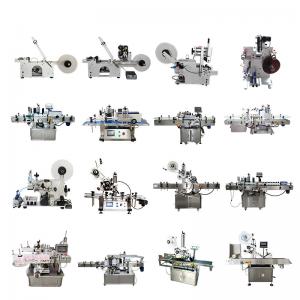A Step-by-Step Guide: How to Choose the Right Capping Machine for Your Business
Step 1: Analyze Your Container and Cap
Before you even look at machines, you must thoroughly understand what you're capping.
-
Container Type: What is it made of? (Glass, PET plastic, HDPE, metal). Is it rigid or flexible? What is its height and diameter?
-
Cap Type: This is the most crucial factor. What kind of closure are you using?
-
Screw-On Caps: The most common type. Requires a chuck to grip and spin the cap.
-
Snap-On Caps: Pressed into place. Requires a different, often simpler, mechanism.
-
ROPP (Roll-On Pilfer-Proof): Aluminum caps that are threaded onto the bottle by the machine itself.
-
Corkers: For wine and spirits.
-
Press-On/Turn (Child-Resistant): Requires a push-down and turn motion.
-
-
Torque Requirements: How tight does the cap need to be? Under-tightening causes leaks; over-tightening can damage the container or cap, or make it impossible for the end-user to open. You need a machine that offers precise, adjustable torque control.
Step 2: Evaluate Your Production Needs
The scale and speed of your operation will dictate the level of automation you require.
-
Throughput (Bottles Per Minute - BPM): How many containers do you need to cap per minute or per hour? This is your primary driver.
-
Low Speed (<30 BPM): A manual benchtop capper or a semi-automatic model may be sufficient.
-
Medium Speed (30-120 BPM): A single-head automatic capper integrated into your line is typically the solution.
-
High Speed (120+ BPM): You'll likely need a multi-head rotary capper capable of handling multiple containers simultaneously.
-
-
Line Space: How much physical space do you have for the capping machine? In-line systems are long and narrow, while rotary systems have a larger footprint.
Step 3: Understand the Different Types of Capping Machines
-
Manual Benchtop Cappers: Ideal for R&D, low-volume production, or pilot batches. Operated by hand, they are affordable but labor-intensive.
-
Semi-Automatic Cappers: The operator places the container and cap, and a foot pedal or button activates the capping mechanism. A good middle ground for small to medium batches.
-
Automatic In-Line Cappers: These are workhorses for production lines. Containers are fed in a single file, and the machine automatically applies and tightens the caps. They can be chuck-style (spinning the cap) or spindle-style (spinning the container).
-
Automatic Rotary Cappers: Designed for very high-speed operations. Containers move in a circle while multiple capping heads apply caps simultaneously. This is the choice for large-scale beverage, pharmaceutical, or chemical plants.
Step 4: Consider Key Technical Features
Don't just buy a basic machine; ensure it has the features you need for quality and flexibility.
-
Torque Control: Look for a machine with an easily adjustable and reliable torque system (e.g., magnetic clutch, servo drive). Servo-driven cappers offer the highest precision and programmability for different products.
-
Changeover Ease: If you run multiple products with different container or cap sizes, how quickly and easily can you change the parts (chucks, grippers, height adjustments)? Quick-change tooling is a massive time-saver.
-
Cap Handling & Feeding: Will you be placing caps by hand, or do you need an automatic cap feeder (a cap elevator)? An automated feeder drastically increases speed and reduces labor.
-
Construction & Hygiene: Is the frame sturdy and vibration-resistant? Are the parts in contact with your product (contact parts) made of stainless steel or other sanitary, easy-clean materials? This is non-negotiable for food, pharmaceutical, and cosmetic applications.
-
Integration & Controls: Can the machine easily communicate with your upstream and downstream equipment (fillers, labelers)? Is the control panel (often an HMI - Human-Machine Interface) user-friendly?
Step 5: Plan for the Future and Partner Wisely
-
Scalability: Consider not just your current needs, but where you want to be in 3-5 years. Can the machine be upgraded or reconfigured to handle higher speeds or different products?
-
Supplier Reputation & Support: This is paramount. Choose a manufacturer or distributor known for quality machinery and, just as importantly, exceptional after-sales support. Ask about:
-
Availability of spare parts.
-
Technical support and service response time.
-
Installation, training, and warranty.
-
Checklist: Your Capping Machine Decision Matrix
| Factor | Your Requirement |
|---|---|
| Cap Type | (e.g., 28mm Screw Cap) |
| Container | (e.g., 500ml PET Round Bottle) |
| Target Torque | (e.g., 10-12 in-lbs) |
| Speed (BPM) | (e.g., 60 BPM) |
| Automation Level | (e.g., Automatic In-Line) |
| Cap Feeding | (e.g., Required - Cap Elevator) |
| Changeover Frequency | (e.g., Daily - Need Quick-Change) |
| Industry Hygiene | (e.g., Food-Grade, 304SS Contact Parts) |
| Budget | (e.g., $XX,XXX) |
| Preferred Suppliers | (e.g., Manufacturer A, Distributor B) |
Final Thought:
A capping machine is a long-term investment in your brand's consistency and reliability. Taking the time to methodically evaluate your requirements will prevent costly mistakes and ensure the machine you choose becomes a seamless, productive part of your operation for years to come. Don't hesitate to request product trials or factory tests with your specific containers—a reputable supplier will be happy to oblige.

